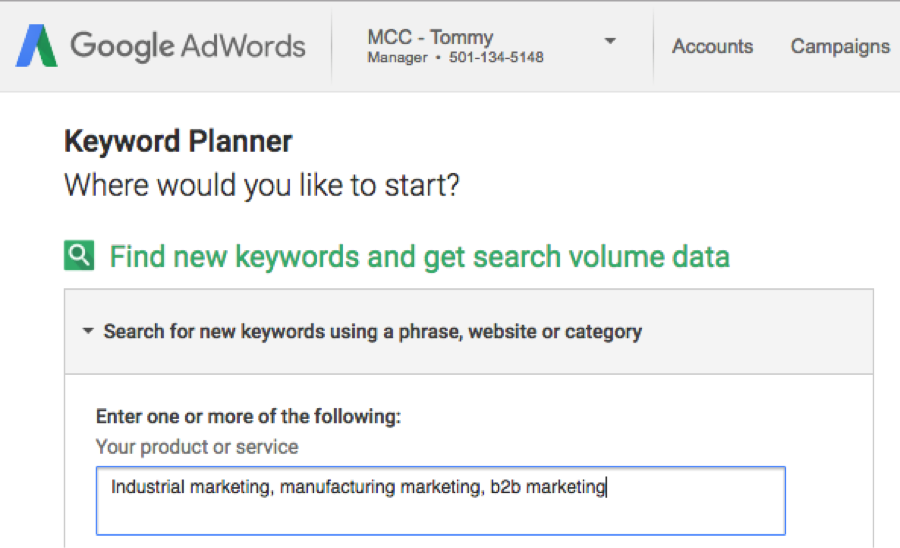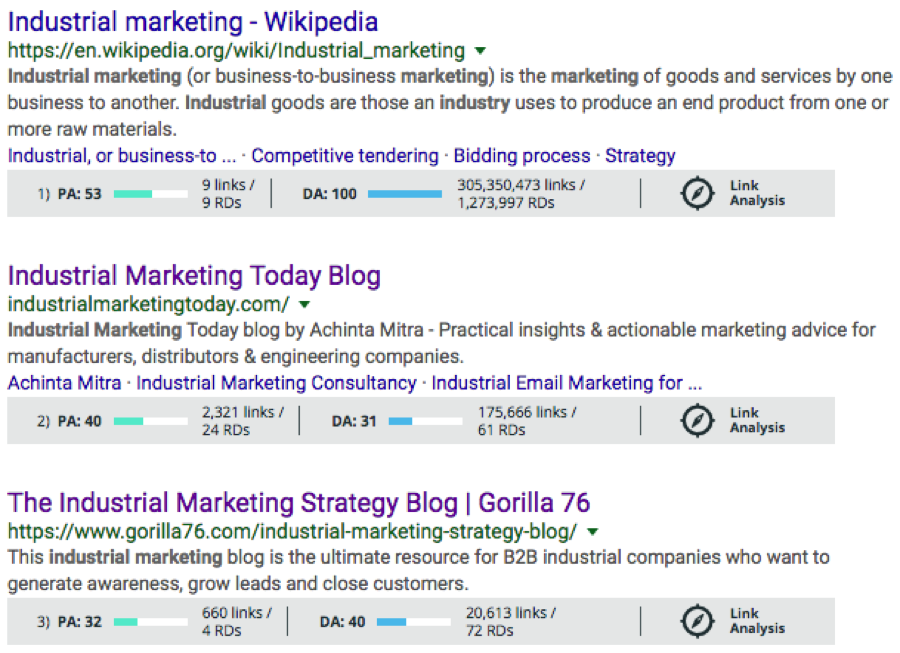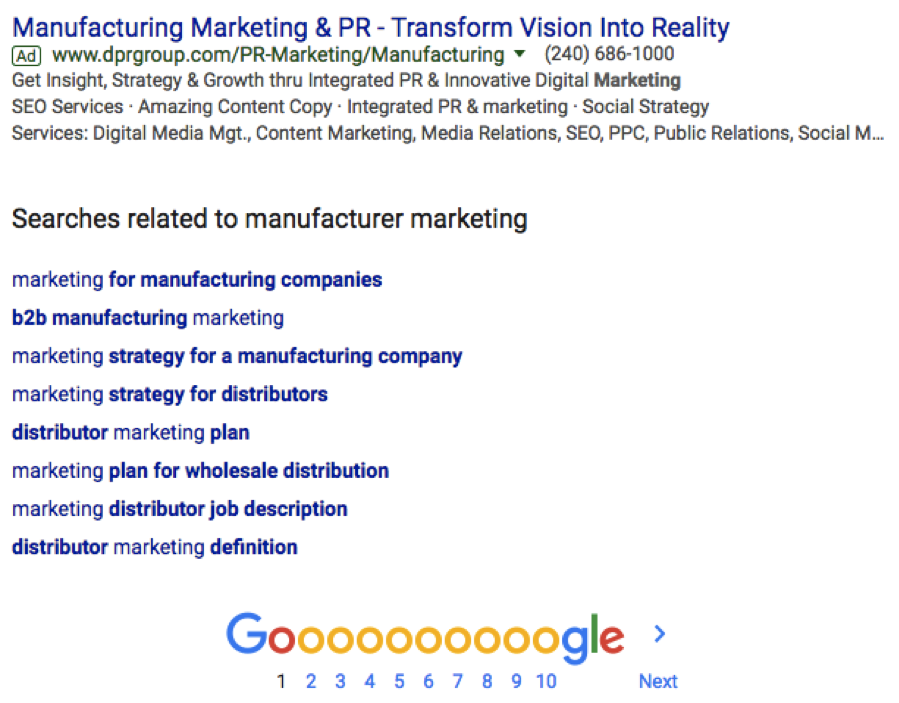If you consult with a digital marketing agency or invest in SEO, this type of question is going to come up.
Over the years the essential question has taken a lot of different forms:
- How many blog posts do we need to rank first?
- How many backlinks do we need to rank first?
- How many social shares do we need to rank first?
- How much “engagement” do we need to rank first?
- How many Google +1s??
But ultimately you want to know how do we rank first for this keyword in Google?
I’m here to give you an unsatisfactory answer: it’s complicated.
Reframing the question
SEO is not a zero sum game; it’s not about ranking first, second or even third. It’s undeniable that higher rankings lead to higher traffic, and it’s understandable that someone investing in SEO wants to rank first for specific keywords.
But there are better metrics to look at to evaluate whether or not your SEO efforts are proving fruitful. Fixating on particular keyword rankings actually distracts from the primary objective of B2B marketing: getting new business.
Instead of asking how do I rank first in Google, ask how do I generate qualified leads through search engines? The quantity of qualified leads coming through your website is the best measure of your online marketing success.
Obsessing over rankings isn’t productive to search engine marketing, but a smart keyword strategy is still the backbone of any successful inbound marketing campaign.
What keywords should we target?
Now that we’ve framed the question properly, let’s talk about the difference between fat-head and long-tail keywords. Fat-head keywords are short, broad, high-volume phrases searched by your customers.
Examples of fat-head keywords in the B2B industrial space include:
- Construction company
- Sustainable plastics
- Diesel generator
- Flooring contractor
- Industrial coating
- Quality control software
These are keywords you’ll want to track over time, but you can’t expect to write a few blog posts and instantly rank first. A combination of keyword-targeted on-site content and off-site links pointing to your content is the best way to eventually rank for these keywords.
Ranking for these types of keywords is a long-term goal that you achieve by consistently earning backlinks and writing educational content. But to know how long that commitment takes, you’ll need to assess the competition. You can do this by performing a SERP (search engine result page) analysis.
First, download the MozBar plugin.
Next, gather a list of 10-20 fat-head keywords that would drive the most qualified traffic using the Google Keyword Planner. Don’t just look at search volume! Figure out the keywords that your best customers are searching for and target those.
Once you have a list of fat-head keywords, search for each phrase and activate your MozBar. Take note of the DA (Domain Authority) and PA (Page Authority) rankings for each URL on the first page. DA represents the number of backlinks pointing to that competitor’s domain, and PA represents the number of backlinks pointing to that exact page.
In order to compete, you’ll need to have a similar DA and PA. Try to find the fat-head keywords with pages ranking that have low PA and DA; these are the best opportunity keywords to rank for over time. You don’t need to have the same level of authority right away, but you’ll have a good idea of what you need to compete.
Note: Moz has a keyword research tool that does a lot of the heavily lifting for you.
Fat-head keywords are something you aspire to rank for over time, while long-tail keywords are opportunities you jump on right away.
Long-tail keywords are longer, specific phrases searched in search engines. They are typically questions, comparison searches and other types of long queries.
Here are some examples of B2B industrial long-tail searches:
- Diesel v. gas generator sets
- Construction management benefits
- How to make products more sustainable?
- What is a low VOC level in paint?
- Office flooring plans
- Stainless steel pipe specifications
Long-tail keywords are perfect for shorter blog content that will supplement your site, attracting backlinks and showing Google you’re an expert in your industry.
You can easily find long-tail keywords by searching for your fat-head keywords in Google and looking at the related results at the bottom of the result page.
Another great way to get long-tail content ideas is by interviewing your sales team. What are the most common questions prospective customers ask? It’s very likely qualified leads are searching these same questions in Google first, looking for answers and ultimately a solution provider.
Long-tail keywords are typically much less competitive than fat-head keywords. Google is looking for a very specific answer, and by creating content that provides that answer, you’re much more likely to show up in the corresponding search result.
Putting it all together
On a week-to-week basis, you need to be focusing on the questions your customers are asking, building up a content base that targets long-tail keywords. You’ll see a steady increase of traffic as you start to rank for low volume, but highly targeted keywords.
On a quarterly to biannual basis, you need to be tracking your fat-head keywords. Build pages around fat-head keywords that will help your prospective clients find what they’re looking for, whether that’s an online purchase or information that qualifies you as an elite problem solver.
Fat-head keywords can take months or even years to rank for, but steadily producing long-tail content that supports your fat-head keywords will help you meet those long term goals.
By honing in on long-tail keywords, you can start to see results from your inbound marketing efforts a few months into your campaign. Focusing on only fat-head keywords can become discouraging, and often distracts from the results you’re really trying to get out of marketing; more business opportunities that turn into happy customers.
To learn more about how you can reframe your mindset from, “we need to rank first in Google!” to “we need to generate online business opportunities!” check out our Hardworking Inbound Marketing Guide for B2B Industrial Companies.
You can also learn about how long-tail keyword research led to a 200% increase in traffic and leads over two years for an industrial coating manufacturer.



